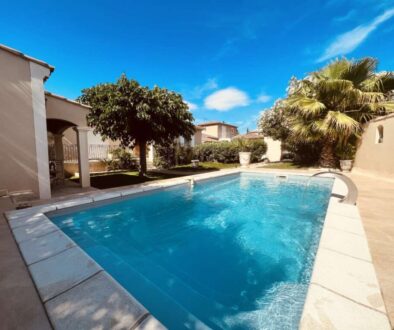How Do Pool Routes Compare to Amazon Delivery Routes?
In this article, we explore the similarities and differences between pool routes and Amazon delivery routes, including their operational structure, income potential, and market demand.
Introduction
As businesses evolve in the face of growing consumer demand, the logistics of service delivery have taken front stage. Two prominent segments of this landscape are pool routes and Amazon delivery routes. Both serve crucial roles in their respective industries, offering unique benefits to those who manage them. Understanding how these two types of routes compare can help aspiring entrepreneurs and existing business owners make informed decisions about their ventures. This article will delve into the operational structures of pool routes versus Amazon delivery routes, analyze their income potential, and discuss market demands, providing a comprehensive overview of both options.
Operational Structure of Pool Routes
When it comes to pool routes, the operational framework is designed around providing maintenance and cleaning services for residential and commercial swimming pools. Pool route ownership typically involves several essential components. First and foremost is the established customer base. When purchasing a pool route, buyers acquire not only the physical assets but also a loyal clientele that ensures steady revenue from day one. According to industry reports, the average pool service route can range from $20,000 to $100,000, depending on the size and reputation of the customer list.
Additionally, pool routes often allow for flexibility in service offerings. Entrepreneurs can choose to specialize in various aspects of pool maintenance, such as cleaning, repairs, chemical balancing, and even landscaping around the pool area. This variety can lead to increased customer satisfaction, as services can be tailored to meet individual client needs.
In contrast, Amazon delivery routes operate under a much more standardized model. The framework is primarily based on efficient logistics and package handling. Delivery drivers are typically employed by Amazon or third-party delivery service providers, which means they follow strict guidelines and operational protocols that ensure timely delivery of packages. Unlike pool routes, which can vary significantly based on the owner’s service approach, Amazon routes require adherence to the company’s established logistics systems and service level agreements.
Income Potential of Pool Routes
One of the most appealing aspects of owning a pool route is the immediate income generation. Once a business owner acquires a route, they can begin earning money right away by servicing existing customers. This contrasts sharply with the experience of launching an Amazon delivery route, where new drivers must often invest time and resources to build a client base before seeing significant income. Pool route owners benefit from a predictable income stream, which can often lead to a stable cash flow.
For example, an established pool route might generate revenue through weekly cleanings, chemical treatments, and repair services. Owners can expect to earn an average of $50 to $150 per pool visit, depending on the service provided and the local market rates. Over time, as they expand their services or add more routes, income potential can grow exponentially.
On the other hand, Amazon delivery routes have a pay structure that is often based on the number of packages delivered. While some drivers can earn a decent income, it may not be as consistent as that of a pool route owner. Amazon delivery drivers also face fluctuations in income based on seasonal demands and peak periods, such as holidays, which can lead to a less stable financial outlook.
Market Demand Comparison
The demand for pool services varies significantly based on geographic location, seasonality, and local market conditions. In states like Florida and Texas, where swimming pools are prevalent and used year-round, the demand for pool maintenance services remains strong. Homeowners often seek professional help to keep their pools clean and safe, making pool routes a lucrative investment opportunity. According to Tower Business Brokers, the pool maintenance industry has been experiencing steady growth, with an increasing number of homeowners willing to invest in professional cleaning services.
Conversely, Amazon delivery routes benefit from a more universal demand that transcends geographical boundaries. As e-commerce continues to flourish, the need for efficient delivery services has skyrocketed. The convenience of shopping online and having products delivered to doorsteps has created a consistent demand for Amazon delivery drivers. However, this market faces its own challenges, such as increased competition among delivery services and pressures to meet consumer expectations for fast delivery.
Flexibility and Growth Potential
When comparing the flexibility and growth potential of pool routes versus Amazon delivery routes, pool routes emerge as the clear winner. Pool route owners have the freedom to expand their services, target specific demographics, and adjust operational strategies based on customer needs. Additionally, they can explore opportunities for growth by acquiring additional routes, diversifying service offerings, and implementing marketing strategies to attract new clients.
In contrast, Amazon delivery routes are subject to company policies and operational constraints. While drivers can take on additional routes, they must do so within the parameters set by Amazon. This limits the ability of delivery drivers to explore entrepreneurial avenues or tailor their services based on customer feedback.
Furthermore, the pool service industry is characterized by a lower barrier to entry when it comes to ownership compared to Amazon delivery routes. Aspiring entrepreneurs can purchase established pool routes, complete with customer lists and equipment, allowing them to hit the ground running. The support from companies like Tower Business Brokers ensures that buyers receive the guidance needed for successful ownership, making it a more approachable option for many.
Best Practices for Success
For those considering a venture in either pool routes or Amazon delivery routes, certain best practices can enhance the likelihood of success. For pool route owners, investing in comprehensive training programs and acquiring the necessary certifications can significantly improve service quality and customer satisfaction. Additionally, establishing strong relationships with clients can lead to higher retention rates and more referrals.
On the other hand, Amazon delivery drivers should focus on optimizing their routes to ensure efficiency and minimal delays. Implementing technology, such as route planning apps, can help drivers manage their deliveries more effectively. Additionally, maintaining a strong work ethic and commitment to customer service will enhance their reputation and lead to better opportunities within the delivery network.
Conclusion
In conclusion, both pool routes and Amazon delivery routes offer unique advantages and challenges. Pool routes provide immediate income potential, operational flexibility, and strong market demand, particularly in states like Florida and Texas. Conversely, Amazon delivery routes benefit from the booming e-commerce sector but present limitations in terms of ownership and flexibility. As aspiring entrepreneurs weigh their options, understanding the nuances of these two business models will empower them to make informed decisions that align with their goals. If you’re considering venturing into the pool service industry, explore the opportunities available through Tower Business Brokers. Contact us today to find the perfect pool route for your business needs.



